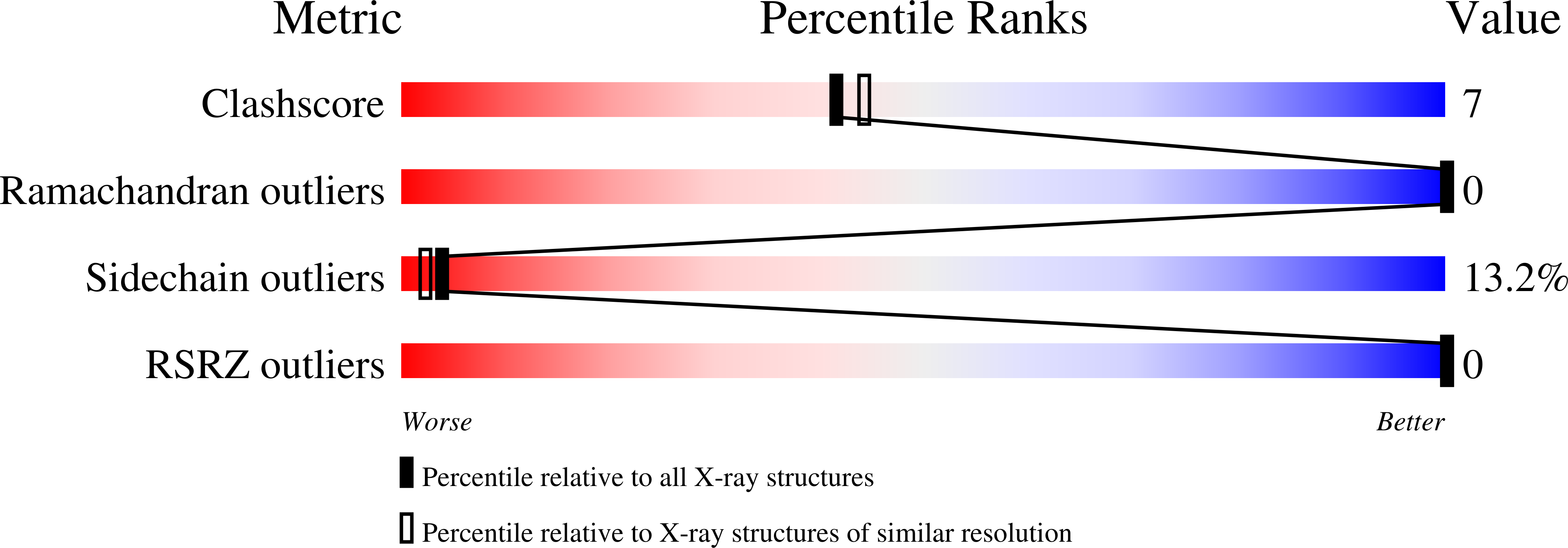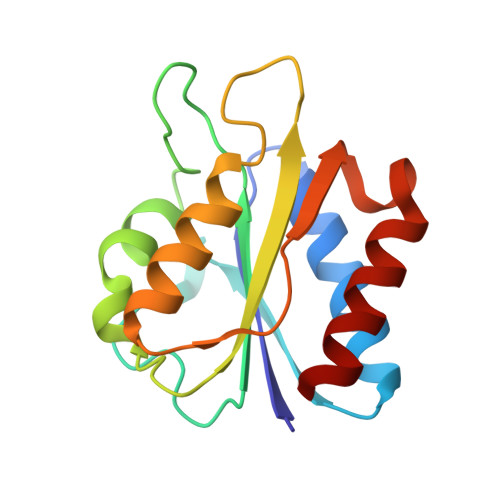Crystal structure of flavodoxin from Desulfovibrio desulfuricans ATCC 27774 in two oxidation states.
Romero, A., Caldeira, J., Legall, J., Moura, I., Moura, J.J., Romao, M.J.(1996) Eur J Biochem 239: 190-196
- PubMed: 8706707
- DOI: https://doi.org/10.1111/j.1432-1033.1996.0190u.x
- Primary Citation of Related Structures:
3KAP, 3KAQ - PubMed Abstract:
The crystal structures of the flavodoxin from Desulfovibrio desulfuricans ATCC 27774 have been determined and refined for both oxidized and semi-reduced forms to final crystallographic R-factors of 17.9% (0.8-0.205-nm resolution) and 19.4% (0.8-0.215-nm resolution) respectively. Native flavodoxin crystals were grown from ammonium sulfate with cell constants a = b = 9.59 nm, c=3.37nm (oxidized crystals) and they belong to space group P3(2)21. Semireduced crystals showed some changes in cell dimensions: a = b = 9.51 nm, c=3.35 nm. The three-dimensional structures are similar to other known flavodoxins and deviations are found essentially in the isoalloxazine ring environment. Conformational changes are observed between both redox states and a flip of the Gly61-Met62 peptide bond occurs upon one-electron reduction of the FMN group. These changes influence the redox potential of the oxidized/semiquinone couple. Modulation of the redox potentials is known to be related to the association constant of the FMN group to the protein. The flavodoxin from D. desulfuricans now studied has a large span between E2 (oxidized --> semiquinone) and E1 (semiquinone --> hydroquinone) redox potentials, both these values being substantially more positive within known flavodoxins. A comparison of their FMN environment was made in both oxidation states in order to correlate functional and structural differences.
Organizational Affiliation:
Departmento de Cristalografia, Instituto de Química Física Rocasolano, Madrid, Spain.















